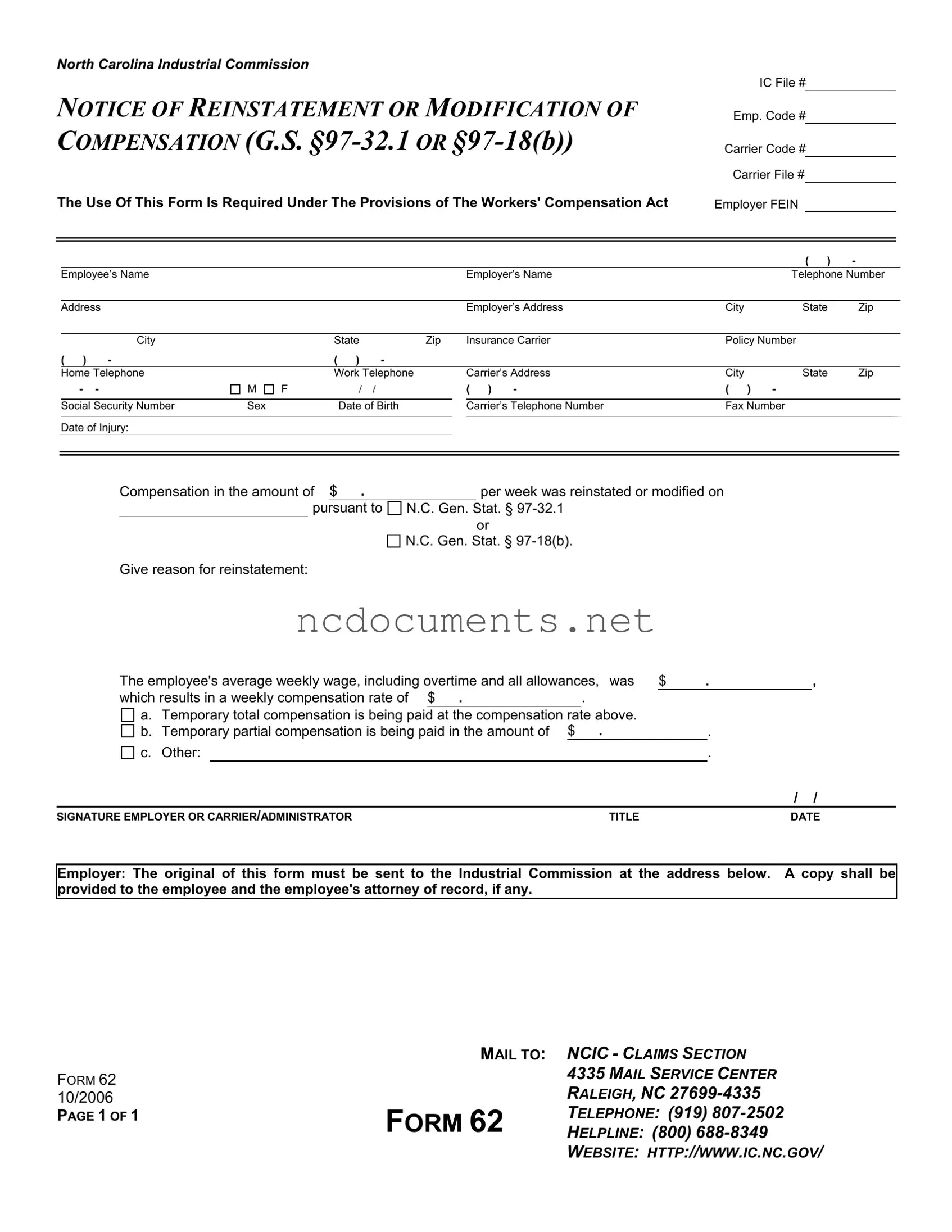The North Carolina Industrial Commission Form 19 is a similar document that addresses the initial report of an employee's injury. Like the Form 62, it is required under the Workers' Compensation Act. Both forms collect essential information about the employee, employer, and the nature of the injury. The Form 19 serves as a foundational document, while the Form 62 focuses on modifications or reinstatements of compensation, reflecting changes in the employee's status following the injury.
The Form 26 is another related document, specifically used for requesting a change in the employee's compensation status. This form is similar to the Form 62 in that it allows employers or insurance carriers to formally communicate changes in compensation levels. Both forms require detailed information about the employee's earnings and the rationale behind any changes, ensuring transparency in the compensation process.
Form 28 is used to report the employee's return to work after an injury. This document parallels the Form 62 by indicating changes in the employee's compensation status. While the Form 62 deals with reinstatement or modification of benefits, Form 28 focuses on the employee's ability to resume work. Both forms play a critical role in tracking the employee's recovery and ensuring that compensation aligns with their current work status.
The Form 30 is utilized for filing a claim for additional compensation after the initial benefits have been awarded. Similar to the Form 62, it serves as a means to request adjustments based on the employee's evolving circumstances. Both forms require detailed financial information and justifications for any changes in compensation, emphasizing the need for clear communication between employers, employees, and insurance carriers.
Form 21 is an agreement to pay compensation, which shares similarities with the Form 62. Both documents are involved in the compensation process and require the employer or insurance carrier to provide details about the compensation being offered. While the Form 21 is an initial agreement, the Form 62 addresses modifications or reinstatements, highlighting the ongoing nature of workers' compensation claims.
The Form 22 is a wage statement that provides a summary of the employee's earnings. This form complements the Form 62 by offering the necessary financial background to determine compensation rates. Both forms emphasize the importance of accurate wage reporting in establishing fair compensation for injured workers, ensuring that all parties have a clear understanding of the employee's financial situation.
In addition to these essential forms, it's important to be aware of the specific requirements for completing a legal transfer of ownership in Colorado, such as the All Colorado Documents, which provide a comprehensive guide for filling out the necessary paperwork accurately.
Lastly, the Form 18 is a notice of claim that initiates the workers' compensation process. It shares a similar purpose with the Form 62 in that both documents are critical for managing compensation claims. While the Form 18 starts the process by notifying the Industrial Commission of an injury, the Form 62 addresses subsequent modifications or reinstatements, illustrating the progression of a claim throughout its lifecycle.
